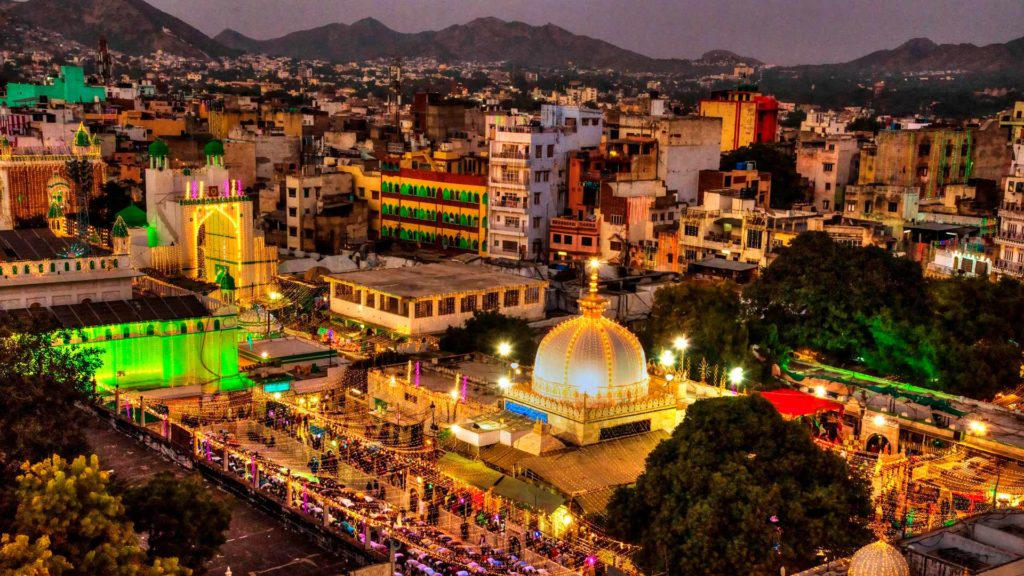Hazrat Usman Harooni (R.A.)
Usman Harooni (526-617 AH) was an early day Sufi Saint, a successor to Shareef Zandani, fourteenth link in the Sufi Silsilah of Chishti Order, and the Master of Khawaja Moinuddin Chishti.
He was born Haroon, Iran around 526 Hijri
He did parda 617 Hijri.
Khwaja Usman Harooni was born in Haroon, which is in Iran. According to some, he was born in 526 AH (1131 AD) and according to others, he was born in 510 AH (1116 AD). He is also known by his nicknames as Abu Noor and Abu Mansur.
When he was rather young, he came in touch with an absorbed mystic (majzub) by the name of Chirk. This association with Chirk brought about a significant transformation in his life. As a result, the material world lost its charm for him and he decided to embrace a higher moral and spiritual life.
Khwaja Usman Harooni went to meet Hazrat Haji Sharif Zindani, a renowned mystic and saint of the Chishti Order, with a request to be enrolled as his spiritual disciple. Khwaja Haji Sharif Zindani found him to be a fit person and accepted the request, by placing a four-edged cap upon the head of Khwaja Usman Harooni.
He then told him that the four-edged cap implied the following four things:
- First is the renunciation of this world;
- Second is the renunciation of the world hereafter;
- Third is the renunciation of the desires of the self;
- Fourth is the renunciation of everything other than God.
Khwaja Usman Harooni spent over thirty years in the company of his spiritual guide. During this period, he was engaged in ascetic practices and prayers. As time passed, he gained many spiritual accomplishments. He was then asked by his spiritual guide to move on and spread the
Gospel of Truth.
Travels Khwaja Usman Harooni undertook many tours and travels to preach the Gospel of Truth. In the process, he visited many countries and cities. Among them are prominent Bukhara, Baghdad, Falooja, Damascus, Mecca and Madina. During the course of his travels, he performed the Hajj, or the annual pilgrimage to Mecca.
In almost all cities, he enjoyed the company of renowned sufis and accomplished dervishes. And while on way to Oosh, he met Sheikh Bahauddin of Oosh. And when he reached Badakshan, he met a saintly man who was one of the attendants of Hazrat Junayd of Baghdad.
He reached Baghdad once again, and there he stayed for a while. During all the travels, he was accompanied by his close and dear spiritual disciple, Khwaja Moin-ud-din Hasan Chishti, who carried his tiffin basket.
After a while, Hazrat Usman Harroni visited India, during the rule of Sultan Altamish.
Death Khwaja Usman Harooni breathed his last on 5th of Shawaal in the year 617 AH (1220 AD). His blessings are still invoked by thousands of people belonging to every strata of society and every school of thought. While his tomb lies in Mecca, there is also a symbol of his strength and source of his blessings at the Usmani Chilla at Ajmer.
Message and teachings According to Khwaja Usman Harooni, a great man is one who is endowed with virtues like contentment, sincerity, self-abnegation, self-sacrifice and above all, spirit of renunciation. He said that the ego in a man was an enemy, as it did not allow him to think rationally, act wisely and live happily. He emphasised that unless a man loves human beings, it is impossible for him to love God.
His advice was simple and his message was as simple and that was “Live”.
To exist is one thing but to LIVE another. To exist means to merely breathe, but to live means to keep the welfare of fellow beings uppermost in priority. To live a good life requires a serious effort on one’s own part. No exterior agency, legislation or act can make the man a moral being. Inner discovery is very important.


